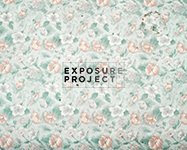"By removing the photographic images of the dead ancestors from her family album, but leaving their crisp silhouettes — dark, empty, ominous ghost-like shadows — Steckelberg has created a powerful visual meditation that moves far beyond the edges of her personal universe.
By “removing” the dead, we are forced to look at one part or the other: the currently living or the forever dead. Clearly, the photographed people and those represented by the silhouettes were once living contemporaneously. We think of how the survivors have surely changed since the photos were taken. It is difficult to imagine the expressions on the faces of those who have left. Were they as serious or happy at these moments as the faces of the others?"





All photographs from the series The Absence of All Color
All Images © Ludmila Steckelberg


















































